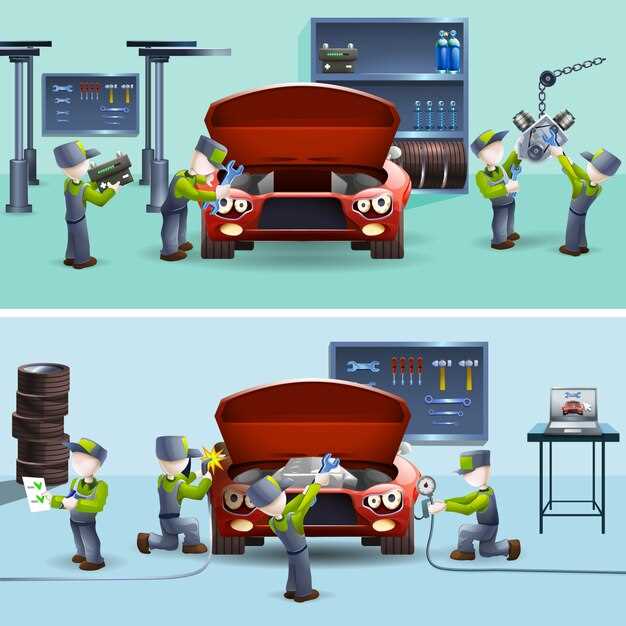
Shocks vs. Dampers – Understanding the Difference
- George Harris
- 0
- Posted on

The terms shocks and dampers are often used interchangeably in the automotive world, leading to confusion among car enthusiasts and everyday drivers alike. Both components play crucial roles in vehicle suspension systems, but they serve distinct purposes that can significantly impact the performance and safety of a vehicle. Understanding the differences between these two elements is essential for anyone looking to improve their vehicle’s ride quality and handling.
Shocks, or shock absorbers, are designed to control the rebound and compression of the suspension springs. They dampen the energy that is transferred to the vehicle’s body when the wheels encounter bumps or uneven surfaces. The primary function of shocks is to provide stability and comfort, ensuring that the vehicle does not bounce excessively after hitting a bump and that the tires maintain contact with the road. This promotes better traction and control during various driving conditions.
On the other hand, dampers refer to a broader category of devices that reduce oscillations and vibrations within a system. In the context of vehicle suspension, dampers can include various components, such as hydraulic systems and air or pneumatic systems. While all shocks are dampers, not all dampers are shocks. Understanding these distinctions is vital for car owners and mechanics looking to enhance performance and achieve a smoother ride.
Understanding the Functionality of Shocks in Vehicle Suspension
Shocks, or shock absorbers, play a crucial role in the vehicle suspension system by controlling the impact and rebound movement of the vehicle’s springs and suspension. Their primary function is to dampen the oscillations that occur when a vehicle encounters bumps and uneven surfaces. This process enhances ride comfort and maintains vehicle control during various driving conditions.
The mechanism of a shock absorber involves a cylinder filled with fluid and a piston that moves through this fluid. When the vehicle moves over a bump, the suspension compresses, pushing the piston into the fluid-filled cylinder. This movement generates resistance, which dissipates the energy from the bounce, preventing excessive movement of the vehicle body. The fluid’s viscosity plays a significant role in this damping effect, as it determines how quickly the piston can move through the fluid.
Different types of shock absorbers, such as twin-tube and monotube designs, offer varying levels of performance and comfort. Twin-tube shocks have an inner and outer tube, allowing them to maintain lower internal pressure while providing adequate damping. Monotube shocks feature a single tube and have better heat dissipation and performance, making them suitable for high-performance vehicles.
Maintaining optimal shock absorber performance is essential for vehicle safety and efficiency. Worn shocks can lead to poor handling, increased braking distance, and decreased tire life. Regular inspections and timely replacements can help ensure that shocks provide the necessary support for a stable and comfortable ride.
In summary, shocks are vital components in a vehicle’s suspension system, enhancing comfort, control, and safety by efficiently managing the vehicle’s movements over various surfaces. Understanding their functionality allows drivers to appreciate the importance of maintaining these critical parts for optimal vehicle performance.
How Dampers Control Movement and Enhance Ride Quality

Dampers, also known as shock absorbers, play a crucial role in vehicle dynamics by controlling the motion of suspension springs and reducing the amplitude of oscillations. They achieve this by converting kinetic energy into thermal energy through hydraulic fluid resistance, thereby smoothing out the ride experience.
When a vehicle encounters bumps or uneven surfaces, the suspension system compresses and rebounds. Dampers regulate this process, preventing excessive bouncing and ensuring that the tires maintain contact with the road. This enhances traction and stability, providing better handling characteristics.
One of the key functions of dampers is to minimize body roll during cornering. By effectively controlling the side-to-side motion of the vehicle, dampers contribute to a more stable and predictable driving experience. This control is essential for both passenger comfort and vehicle safety.
Moreover, modern dampers can feature adjustable settings, allowing drivers to choose between comfort and sport modes. In comfort mode, dampers provide a softer response, absorbing more road imperfections, while sport mode stiffens the dampers for improved feedback and handling during dynamic driving scenarios.
In addition to enhancing ride quality, dampers also help in prolonging the lifespan of other suspension components by reducing wear and tear caused by excessive vibrations. This results in lower maintenance costs and improved reliability over time.
In conclusion, dampers are integral to vehicle performance, as they control movement and significantly enhance ride quality. Their ability to manage oscillations, improve stability, and adapt to driving conditions makes them essential for providing a safe and comfortable driving experience.
Identifying Signs of Wear and When to Replace Shocks and Dampers

Understanding when to replace shocks and dampers is crucial for maintaining vehicle safety and performance. Regular inspection can help identify the signs of wear that indicate it’s time for a replacement.
One of the primary indicators of worn shocks or dampers is a noticeable decrease in ride comfort. If you experience excessive bouncing or a harsh ride over bumps, this can signify that the dampening capabilities are compromised. Similarly, if the vehicle feels unstable, especially during turns or sudden stops, replacing the dampers should be considered.
Physical inspection can also reveal signs of wear. Look for fluid leaks around the shock or damper body. Any oily residue is a clear indication that the seal has failed, and the unit is no longer effective. Additionally, visual signs such as rust or corrosion can weaken the structure, which necessitates replacement.
Another critical sign of worn shocks or dampers is uneven tire wear. If you notice that your tires are wearing unevenly or show signs of cupping, this could be attributed to a lack of proper suspension support, prompting the need for new components.
It’s also essential to consider the mileage. Generally, shocks and dampers should be replaced every 50,000 to 100,000 miles, but this can vary based on driving conditions and vehicle usage. Regular maintenance checks can help you keep track of this timeline.
By recognizing these signs of wear early, you can ensure optimal vehicle performance, enhance safety, and prevent further damage to other suspension components.
